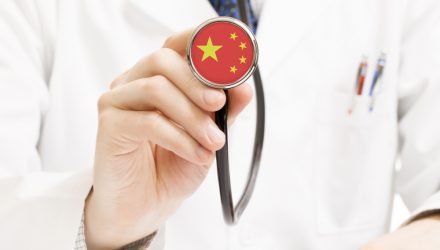China continues to roll back its COVID-19 zero-tolerance policy, lifting many ongoing quarantines and removing testing requirements that previously prevented the population from moving about cities and the country with ease. It’s a move that comes in the wake of unprecedented protests across the country and as COVID cases continue to rise, it’s likely to lead to increased cases and vaccinations in the coming months, driving up demand in China’s healthcare sector.
Part of the new rules will prevent local officials from arbitrarily ordering lockdowns of neighborhoods and businesses, a trend that has been on the rise in recent weeks as COVID cases in the country continue to climb. Buildings and apartments where COVID is confirmed will still be placed under quarantine but residents can do so at home instead of having to travel to government quarantine facilities, reported WSJ.
Other changes include removing most testing requirements or scanning QR health codes to enter establishments, except those deemed high risk such as nursing homes, schools, and nurseries. Additionally, travelers within the country won’t need to provide proof of negative status when entering another province.
There is a danger that the lifting of restrictions will lead to a surge in COVID infections, such as in Hong Kong and Taiwan, and dampen growth in the short term. China is working to provide mobile vaccination stations for the elderly, one of its lowest vaccinated populations and a cited reason for restrictions previously, and analysts anticipate a boom in vaccinations as exposure risk increases with restrictions lifted.
KURE Offers Exposure to China’s Healthcare Sector
The KraneShares MSCI All China Health Care Index ETF (KURE) offers investors access to the Chinese healthcare sector and seeks to track the MSCI All China Health Care 10/40 Index, a free float-adjusted market cap-weighted index. KURE is currently above its 50-day Simple Moving Average and is hovering near its 200-day SMA, which generally signals to buy for trend followers.
The fund includes companies listed in Mainland China, Hong Kong, and the U.S. and invests across small-, mid-, and large-cap companies. These include biotech companies, patent, and generic pharmaceutical companies, hospital administration, medical equipment producers, healthcare IT, and more.
KURE provides exposure to several COVID vaccine producers in China, including Sinopharm, Shenzhen Kangtai Biological Products Co, and Lizvon Pharm Inc.
The “10/40” index applies limits to the weights and holdings, such that the weight of each group entity in the index is capped at 10%, while the cumulative weight of all group entities with a weight that is greater than 5% does not exceed 40% of the entire index.
KURE has an expense ratio of 0.65% with fee waivers that expire in August 2023.
For more news, information, and strategy, visit the China Insights Channel.

